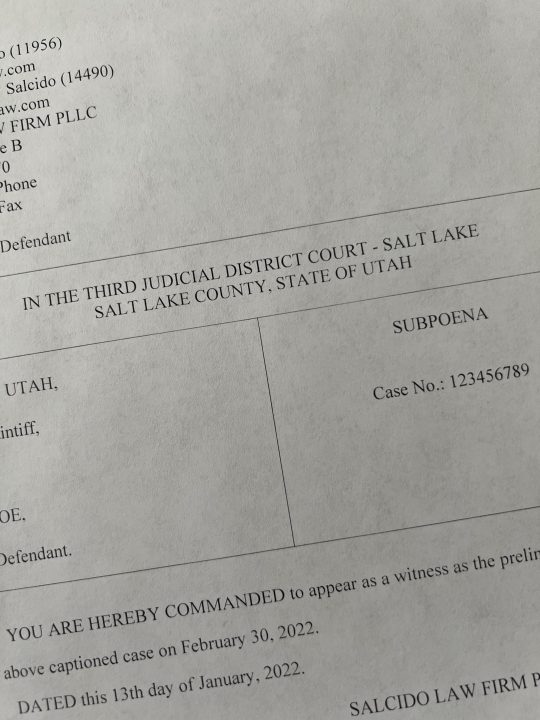What is Rule 412?
Rule 412 of the Utah Rules of Evidence prohibits the admission of evidence, in criminal cases alleging sexual misconduct, of the victim’s past sexual behavior or predisposition. For example, in a rape case, the defendant cannot introduce evidence that the victim is sexually promiscuous, has had many sexual partners, etc. There are only three exceptions to the Rule 412 prohibitions:
- Evidence can be introduced of the victim’s sexual behavior to show that the course of semen, injury to the victim, or other physical evidence derived from someone other than the defendant;
- Evidence can be introduced of the victim’s past sexual behavior with the defendant to show that the victim consented to the sexual encounter with the defendant;
- Evidence can be presented regarding the victim’s sexual behavior and predisposition if precluding the evidence would violate the defendant’s constitutional rights.
Rule 412 is hard and fast, and most courts err on the side of excluding any evidence of the victim’s sexual behavior or predisposition.
Recent Appellate Court Case Addressed Rule 412
In State v. Ashby, the defendant, an adult woman, was charged with sexually molesting an eight year old boy. This eight year old boy had some sexual encounters in the past with at least six other children, all of which were other young boys except one. The defendant wanted to present this evidence to the jury on the grounds that such evidence could (i) rebut the jury’s likely assumption that the child was too young to fabricate the allegations against the defendant; (ii) impeach the child’s testimony and challenge his credibility; and (iii) show that he had earlier opportunities to disclose abuse but did not do so.
The trial court did not allow the evidence about the child’s past sexual behavior in and the appellate court agreed. On appeal the Utah Court of Appeals looked at the (1) relevance of the proposed evidence and (2) whether the trial court’s decision to exclude the evidence furthered Rule 412’s purpose.
As to the first question the court determined that the evidence was relevant for the reasons stated by the defendant. As to the second question, however, the court found that the trial court was correct in not admitting the evidence because that furthered the purpose of Rule 412.
The court cited the Utah Supreme Court that “rule 412 should be construed broadly in order to fully effectuate the policy considerations underlying its prohibitions.” The court also noted that Rule 412 has several goals, including “protecting victims of sexual assault from humiliation, encouraging victims to report sexual crimes, and preventing the introduction of ‘irrelevant and collateral issues that may confuse or distract the jury.’” Citing State v. Marks, 2011 UT App 262, ¶ 48. When the victim is a child, he “is likely to be confused and frightened about the past experience” and “may have inadequate vocabulary to discuss it, and the stress of confronting those memories may increase the likelihood that the child will be unable to testify competently about the current allegations.” Consequently, “rule 412’s goal of protecting victims of sexual crimes from embarrassment and humiliation, and of encouraging them to report the crimes, are strongly implicated when the complainant is a child.” Id.
The court concluded that introducing evidence of the child’s past sexual behavior embarrass and humiliate the child, and therefore, excluding the evidence was consistent with the purpose of Rule 412.




